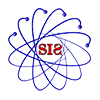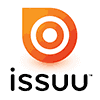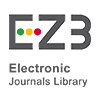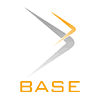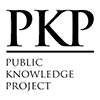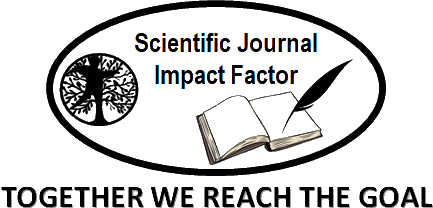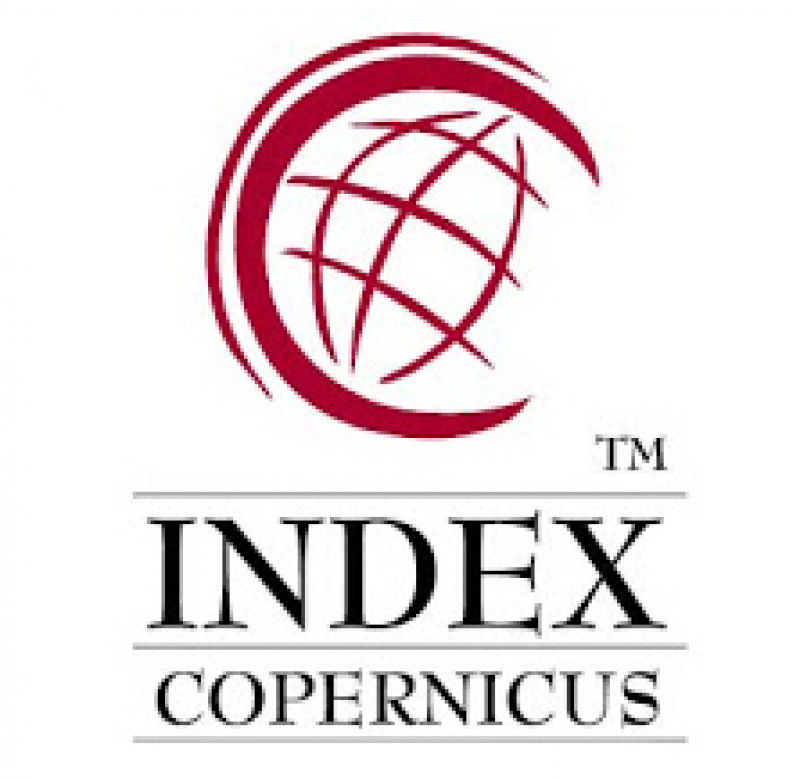A Comparative Study of Human Creation and the Continuation of Progeny with an Emphasis on the Concept of 'Nafs Wahida' in the Quran and the Bible
Abstract
The creation of humankind has always been a fundamental topic in religious texts, with "Nafs Wahida" (a single soul) being one of the key concepts in this regard. This study, employing a comparative approach and content analysis method, examines the perspectives of the Qur’an, the Torah, and the Gospels on the creation of humans and the concept of "Nafs Wahida." The primary objective of this research is to conduct an in-depth analysis of the sacred texts of the Abrahamic religions (Islam, Judaism, and Christianity) to identify the similarities and differences in their interpretations of human creation, the position of men and women, and the semantics of "Nafs Wahida." The Qur’an, in four verses (Surah An-Nisa 4:1, Al-An’am 6:98, Al-A’raf 7:189, and Az-Zumar 39:6), introduces "Nafs Wahida" as the origin of human creation, indicating the unity of human origin and the commonality of all humankind in a single fundamental essence. This perspective emphasizes the equality of men and women in creation and affirms that both were brought into existence from the same essential source. In contrast, the Torah portrays Adam as a male individual and the representative of humankind, stating that Eve was created from one of his ribs. This suggests a lower status for women compared to men in this sacred text. Likewise, the Gospels reference the creation story but emphasize that Eve was created for Adam rather than vice versa. These texts present various theories regarding Eve’s creation, including the creation of Eve from Adam’s rib, the creation of Eve from the remaining clay of Adam’s formation, and the theory of the first human being as an androgynous entity. The findings of this study reveal that while the Qur’an underscores the creation of both men and women from a single essence, the Torah and the Gospels offer differing perspectives on the distinct creation of men and women. Nonetheless, all these texts affirm the unity of human origin and the complementary role of men and women in the continuation of human lineage.
Keywords
Full Text:
PDFReferences
• The Holy Quran
• The Holy Bible (Old and New Testaments)
• Abu Hayyan al-Gharnati, Muhammad bin Yusuf, Al-Bahr al-Muhit, Beirut, Dar al-Fikr, 1420 AH / 2000 CE.
• Al-Alusi, Mahmoud bin Abdullah, Ruh al-Ma'ani fi Tafsir al-Qur'an al-Azim, Beirut, Dar al-Kutub al-Ilmiyya, 1415 AH.
• Al-Ayyashi, Muhammad bin Mas'ud, Tafsir al-Ayyashi, edited by Sayyid Hashem Rasouli Mahallati, Tehran, Islamic Scientific Library, n.d.
• Al-Azhari, Muhammad bin Ahmad, Tahdhib al-Lugha, Beirut, Dar Ihya al-Turath al-Arabi, 1421 AH.
• Al-Farahidi, Abdul Rahman Khalil bin Ahmad (100-175 AH), Kitab al-'Ayn, 6 vols., edited by Dr. Mahdi al-Makhzoumi & Dr. Ibrahim al-Samarrai, Beirut, Mu'assasat al-A'lami lil-Matbu'at, 1408 AH.
• Al-Fayoumi, Ahmad bin Muhammad (770 AH), Al-Misbah al-Munir fi Gharib al-Sharh al-Kabir lil-Rafi'i, 2 vols., Cairo, Dar al-Ma'arif, 1397 AH / 1977 CE / 1356 SH.
• Al-Mughniya, Muhammad Jawad (1981 CE), Tafsir al-Kashif, Beirut, Dar al-Ilm lil-Malayin, n.d., Third Edition.
• Al-Qurtubi, Muhammad bin Ahmad, Al-Jami' li Ahkam al-Qur'an, edited by Ahmad al-Bardouni & Ibrahim Atfayish, Dar al-Kutub al-Ilmiyya, 1414 AH / 1993 CE.
• Al-Saduq, Abu Ja'far Muhammad, Ilal al-Shara'i, Najaf, Al-Maktaba al-Haydariya, 1385 AH.
• Al-Suyuti, Jalal al-Din, Al-Durr al-Manthur fi Tafsir bil-Ma'thur, Beirut, Dar al-Fikr, 1993 CE.
• Al-Tabari, Muhammad bin Jarir, Jami' al-Bayan fi Tafsir al-Qur'an, Beirut, Dar al-Ma'rifa, 1412 AH.
• Al-Tabari, Muhammad bin Jarir, Jami' al-Bayan 'an Ta'wil Ay al-Qur'an, edited by Abdullah Turki, Mu'assasat al-Risalah, 1420 AH.
• Al-Tabarsi, Fazl bin Hassan, Majma' al-Bayan fi Tafsir al-Qur'an, edited by Mohammad Javad Balaghi, Tehran, Nashr-e Naser Khosrow, 3rd edition, 1372-1373 SH.
• Al-Tusi, Muhammad bin Hasan, Al-Tibyan fi Tafsir al-Qur'an, Beirut, Dar Ihya al-Turath al-Arabi, n.d.
• Ali Akbar Dehkhoda, Dehkhoda Dictionary, 15 vols., Iran, Tehran, Rouzaneh, 1373 SH.
• Alijani, Reza, Women in Sacred Texts, Tehran, Roshangaran & Women's Studies Publishing, 1390 SH, Second Edition.
• Amuli, Sayyid Haidar, Al-Muhit al-A'zam wa al-Bahr al-Khaddam, Tehran, Ministry of Islamic Guidance, 1422 AH.
• Bahrani, Sayyid Hashim, Al-Burhan fi Tafsir al-Qur'an, Qom, Ba'that Foundation, 1415 AH.
• Balaghi, Abdul Hujjat, Hujjat al-Tafasir wa Balagh al-Ikseer, Qom, Hikmat Press, n.d.
• Baskin, Judith R., "Rabbinic Judaism and the Creation of Woman", Shofar: An Interdisciplinary Journal of Jewish Studies, Vol. 14, No. 1, 1995, pp. 66-71.
• Fakhr al-Razi, Muhammad bin Umar, Al-Tafsir al-Kabir (Mafatih al-Ghayb), Dar Ihya al-Turath al-Arabi, 1420 AH.
• Gesenius, Wilhelm; Samuel Prideaux Tregelles, Hebrew and Chaldee Lexicon to the Old Testament, Oxford University Press, London, 1907.
• Heger, Paul, Women in the Bible, Qumran and Early Rabbinic Literature: Their Status and Roles, Studies on the Texts of the Desert of Judah 110, Leiden: Brill, 2014.
• Ibn Manzur, Muhammad bin Mukarram, Lisan al-Arab, 15 vols., Beirut, Dar al-Fikr, 1414 AH.
• Ibn Sidah, Ali bin Ismail, Al-Muhkam wa al-Muhit al-A'zam, edited by Abdulhamid Hindawi, 11 vols., Beirut, Dar al-Kutub al-Ilmiyya, Muhammad Ali Baydoun Publications, 1421 AH / 2000 CE.
• Jawhari al-Farabi, Ismail bin Hammad, Al-Sihah Taj al-Lugha wa Sihah al-Arabiya, edited by Ahmad Abdul Ghafur Attar, 6 vols., Beirut, Dar al-Ilm lil-Malayin, 1407 AH / 1987 CE.
• Makarem Shirazi, Naser and Associates, Tafsir-e Nemouneh, Tehran, Dar al-Kutub al-Islamiya, 1374 SH.
• Makvand, Mahmoud, Analysis of the Creation of Woman from the Rib of Man in the Torah and Its Relation to the First Verse of Surah An-Nisa, Qur'an and Hadith Journal, No. 2, Fall & Winter 1400 SH.
• Majlisi, Muhammad Baqir, Bihar al-Anwar al-Jami'ah li Durar Akhbar al-A'imma al-At'har, Beirut, Mu'assasat al-Wafa, 1403 AH.
• Najafi Khomeini, Muhammad Jawad, Tafsir-e Asan, Tehran, Islamiyya Publishing, 1398 SH.
• Qummi Mashhadi, Muhammad bin Mohammad Reza, Tafsir Kanz al-Daqa’iq wa Bahr al-Ghara’ib, Tehran, Ministry of Culture and Islamic Guidance, 1368 SH.
• Raghib al-Isfahani, Hussein bin Muhammad, Al-Mufradat fi Gharib al-Qur'an, edited by Safwan Adnan Dawudi, 1 vol., Beirut, Dar al-Shamiya, 1412 AH / 1992 CE.
• Razavi Salduzi, Muhammad Amin (1305-1380 SH), The Creation of Humans from the Perspective of the Quran and Hadith, compiled by Muhammad Jafar Milan Noorani.
• Shaker, Mohammad Kazem, The Meanings of "Nafs" in the Quran, Philosophical and Theological Research, 1379 SH, Fourth Edition.
• Taleqani, Sayyid Muhammad, A Ray of the Quran, Tehran, Sherkat Sahami Enteshar, 1370 SH.
• Tabatabai, Sayyid Muhammad Husayn, Al-Mizan, Qom, Dar al-Kutub al-Islamiyya, n.d.
• Tabatabai, Sayyid Muhammad Husayn, Tafsir al-Mizan, translated by Sayyid Mohammad Baqir Mousavi Hamadani, Office of Islamic Publications, 1390 SH.
• Tayyib, Abdul-Hussain, Al-Furuq fi al-Lugha, Beirut, Dar al-Afaq al-Jadida, 1400 AH.
DOI: http://dx.doi.org/10.18415/ijmmu.v12i3.6663
Refbacks
- There are currently no refbacks.
Copyright (c) 2025 International Journal of Multicultural and Multireligious Understanding

This work is licensed under a Creative Commons Attribution-NonCommercial-NoDerivatives 4.0 International License.
https://ijmmu.com
editor@ijmmu.com
facebook.com/ijmmu
Copyright © 2014-2018 IJMMU. All rights reserved.










